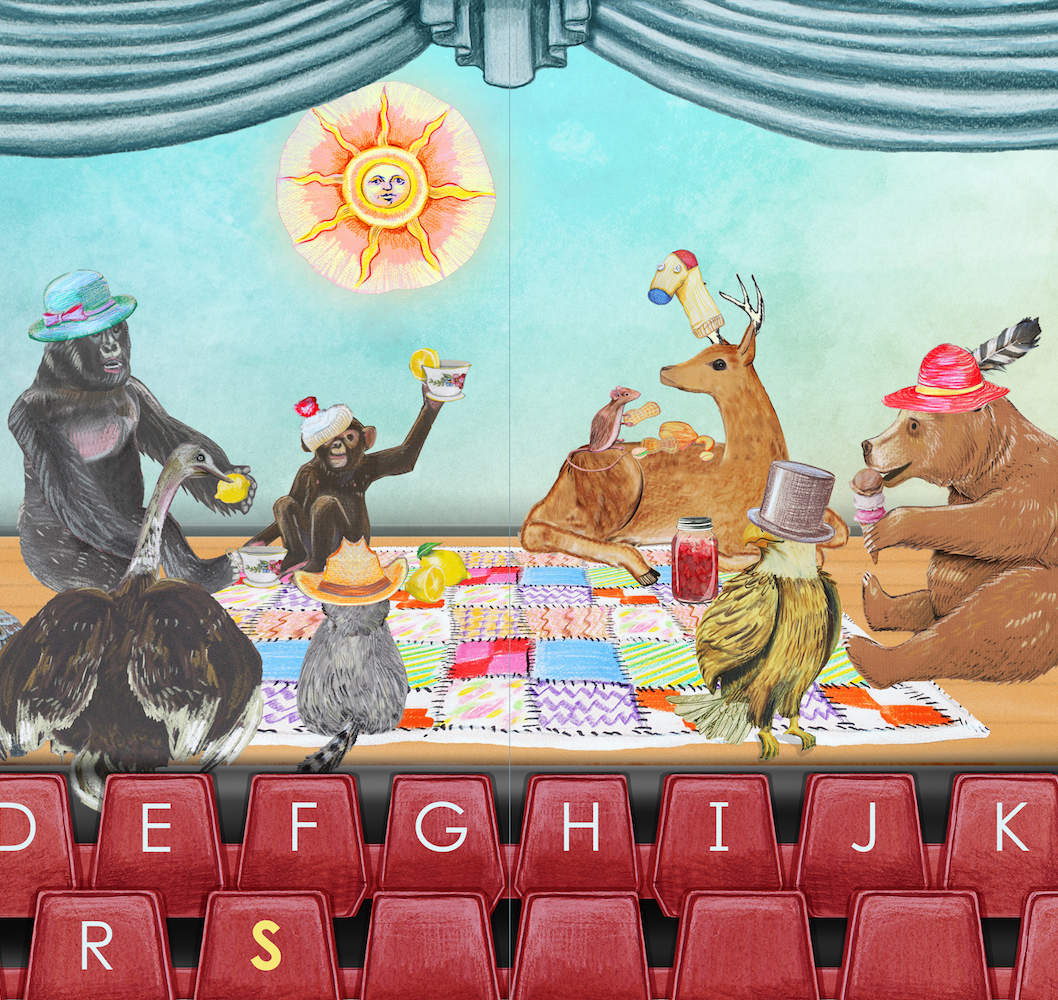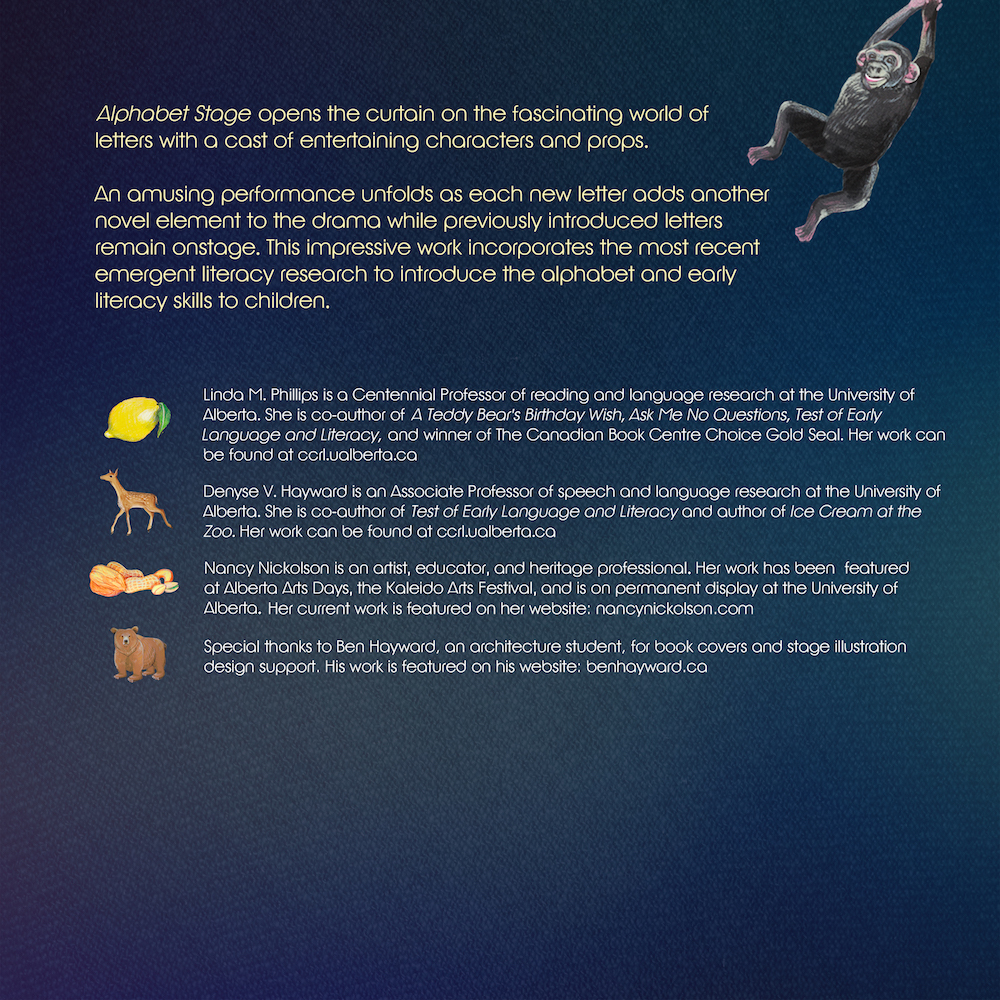Description
Alphabet Stage provides an easy entry into the world of the alphabet for children.
There are thousands of alphabet books designed to accomplish other aspects of the alphabet, such as all words that pertain to transportation, fruit, insects, the arctic, etc. We did not identify any alphabet book inclusive of both language and literacy research.
Based on the best of what is known, we developed Alphabet Stage, and included the fundamental research aspects to facilitate children learning the alphabet.
- Layout and Format Features
- Century Gothic font was used because it is the easiest of fonts for children to read.
- Both upper and lower case letters are used because both are necessary in learning to read
- Repeat occurrences of letters to increase exposure to, and practice with the alphabet.
- Follows a predictable format (Letter, Word, Complementary Illustration placements).
- Based on eye movement research, letters and words are carefully positioned to accommodate children’s attention to each.
- Word Features
- Word choices reflect the most common sound represented by each of the alphabet letters.
- Emphasis is on the first letter-sound in each of the words.
- Illustration Features
- Designed to provide delightful, colourful, and realistic objects and animals interacting in unexpected ways on the Alphabet Stage.
- This design fosters practice, recognition of the alphabet letters, memory development, and promotes oral and written language.
- Cognitive Features
- Designed to teach alphabet knowledge, specifically, letter name, letter-sound correspondence, visual cues (including complementary illustrations), and oral and written vocabulary.
- Provides repetition for exposure and memory development.
- Eliminates any confusion between letters and sounds.
- Facilitates the development of mental graphic representation of alphabet letters.





